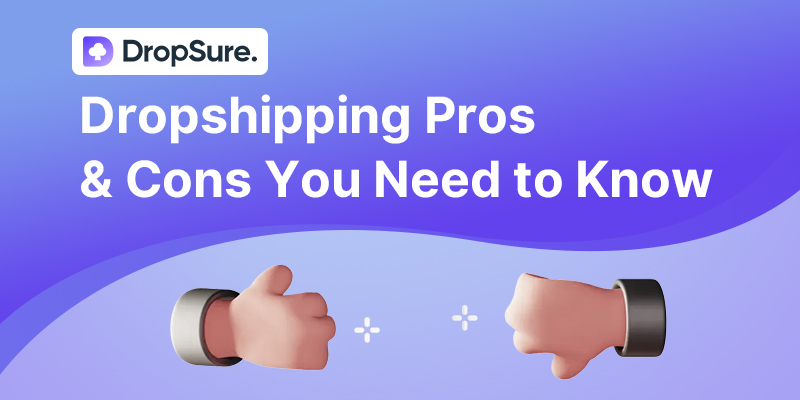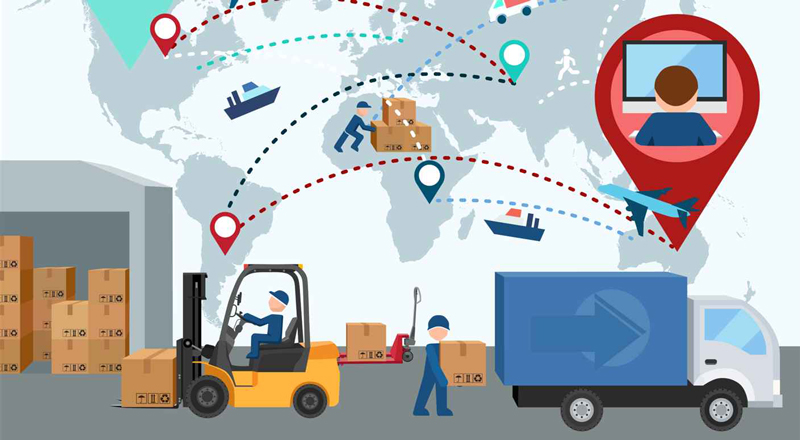For many cross-border e-commerce and dropshipping sellers, AliExpress may be the main supplier channel during the entry stage. However, as business grows, the platform’s shortcomings gradually become apparent — long shipping times, slow customer service response, and inconsistent product quality. In today’s fiercely competitive environment with rising customer expectations, these issues can no longer meet operational needs.
Especially with the increasing popularity of emerging platforms like TikTok and TEMU, logistics efficiency and service experience have become critical factors affecting repeat purchases and brand reputation. Continuing to rely on AliExpress not only fails to guarantee customer satisfaction but also seriously limits brand development.
Therefore, choosing more efficient, stable, and one-piece dropshipping-supported professional domestic suppliers has become a consensus among more and more sellers. This article will introduce several domestic dropshipping platforms worth your attention, helping you achieve a better balance between efficiency, quality, and customer experience.
What Problems Does AliExpress Actually Have?
AliExpress is essentially a retail platform targeting C-end consumers, not specifically designed for dropshipping scenarios. Although it has certain advantages in product variety and pricing, as market competition intensifies, its drawbacks have gradually surfaced. It is especially unsuitable for sellers aiming for long-term brand building and operation.
Below are the most common problems sellers face and their direct impacts:
| Problem | Impact |
|---|---|
| Long shipping times (often over 7 days) | Customers wait too long, leading to order cancellations or negative reviews |
| High shipping costs | Profit margins get squeezed, limiting marketing and ad budgets |
| Severe hijacking and unstable links | Pages just launched get delisted or copied by competitors first |
| Lack of professional customer service and after-sales support | Customer issues can’t be resolved timely, store ratings drop, affecting ranking |
| Unstable product quality control | Products don’t match advertised expectations, causing high return rates and negative feedback |
In mature e-commerce markets like the US, UK, and Canada, consumers are already used to Amazon-style logistics experience. Delivery times exceeding 7 days easily trigger complaints and refunds. Continuing to rely on AliExpress fails to meet these markets’ high standards for “timeliness + service,” and in the long run, sellers who are more professional and efficient will replace them.
What Domestic Dropshipping Services Are Available?
Dropsure
Dropsure is a domestic dropshipping service provider focused on supply chain flexibility and risk control. By leveraging intelligent warehouse management and multi-channel logistics integration, it achieves a relatively stable and efficient shipping process. Dropsure invests heavily in product quality control, supporting strict inspections and return/exchange services to ensure sellers’ after-sales experience. The platform also provides comprehensive automated order management tools, compatible with major e-commerce platforms, enabling sellers to manage orders and inventory seamlessly. Dropsure emphasizes supply chain visibility and data analytics, helping sellers optimize procurement and inventory strategies, thus reducing operational risks.
● Suitable for: Medium to large sellers who prioritize supply chain stability, risk management, and data-driven operations.
CJ Dropshipping
CJ Dropshipping is one of the most comprehensive and compatible supply chain service providers. It operates overseas warehouses in multiple countries including the US, UK, Germany, and France, with self-operated logistics and customs clearance, usually delivering within 7–12 days. Besides basic dropshipping and packing services, CJ offers value-added features such as automated order synchronization, sorting and packing, and product photography. Its customer service team is flexible and negotiable, offering better discounts based on order volume and cooperation depth.
● Suitable for: Shopify, Etsy, TikTok sellers
● Tip: Full-process automated shipping can be achieved through CJ’s API integration, significantly reducing labor costs.
Wiio
Wiio features a user-friendly interface and simple operations, targeting primarily the European and American markets with a rich SKU inventory. It supports dropshipping as well as brand customization, independent site packing, and exclusive packaging design. For after-sales service, Wiio’s customer support responds promptly, resolving most issues within 24 hours. Overall, Wiio is better suited for small to medium-sized sellers or independent site sellers seeking ease of use and quick onboarding.
● Suitable for: New independent store owners and small-to-medium sized shops
HyperSKU
HyperSKU is a dropshipping provider focusing on branding and efficient fulfillment, especially suitable for sellers targeting mid-to-high-end markets. The platform excels in logistics stability, with US orders typically delivered within 5–8 business days, maintaining high standards in both outbound speed and last-mile delivery.
Regarding brand building, HyperSKU offers customization services including logo stickers, branded packaging bags, and exclusive manuals to help sellers create a more professional product image. The platform emphasizes long-term partnerships, providing product selection advice, inventory alerts, and automatic order synchronization, reducing operational complexity while improving overall service quality.
● Suitable for: Independent store owners or DTC brand teams focusing on high-ticket products and brand tone.
GSR Dropshipping
GSR is a rapidly emerging domestic dropshipping service provider advocating a “flexible supply chain” concept, particularly suitable for sellers focusing on content-driven and viral product strategies. The platform supports small batch customization, fast sample making, and multimedia content production (images, short videos), offering efficient support during early product testing phases to lower trial-and-error costs.
In service responsiveness, GSR boasts flexible communication and high execution efficiency, able to quickly align product selection and launch schedules with sellers’ content rhythms on platforms like TikTok, Instagram Reels, and Xiaohongshu. Although its shipping speed is average within the industry, it stands out in content collaboration and rapid viral response.
● Suitable for: Seller teams relying on short video content for traffic, emphasizing rapid product testing and content co-creation.
How to Choose the Right Supply Chain Service Provider?
Don’t blindly follow trends — what suits others might not suit you. You can evaluate from these dimensions:
| Dimension | Suggestions |
|---|---|
| Shipping Country | Does it cover your core markets (e.g., US, UK, Canada)? |
| Fulfillment Speed | Can they ship out within 24-48 hours? |
| Cost Control | Are the shipping fees + product prices reasonable? Any hidden charges? |
| Quality Stability | Can they provide returns, quality inspections, and sample services? |
| Automation Capability | Can they integrate with Shopify, TikTok Shop, etc.? |
| After-sales Service | Is there dedicated customer service? Are responses timely? |
Your supply chain determines your profit ceiling.
Many dropshipping sellers fail to sustain growth not because of product selection or platform issues, but because they rely on inefficient supply chains and cannot compete with more efficient operators.
AliExpress is not unusable, but once your business reaches a certain scale, upgrading your supply chain is inevitable — only then can you break through growth bottlenecks.
If you’re still unsure which supplier to choose, feel free to leave a message. I can recommend the most suitable supply chain service provider for your store free of charge.

 7 min read
7 min read




